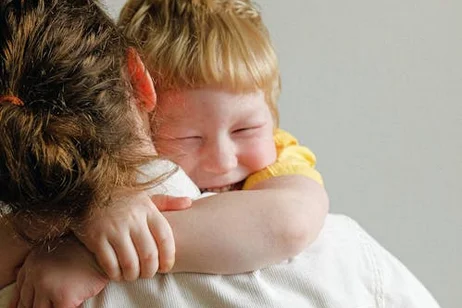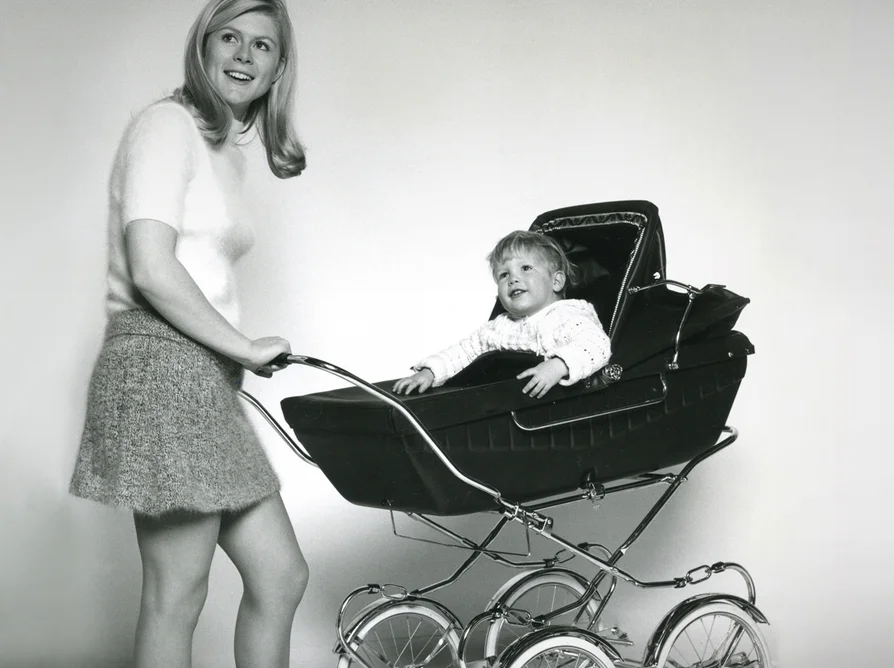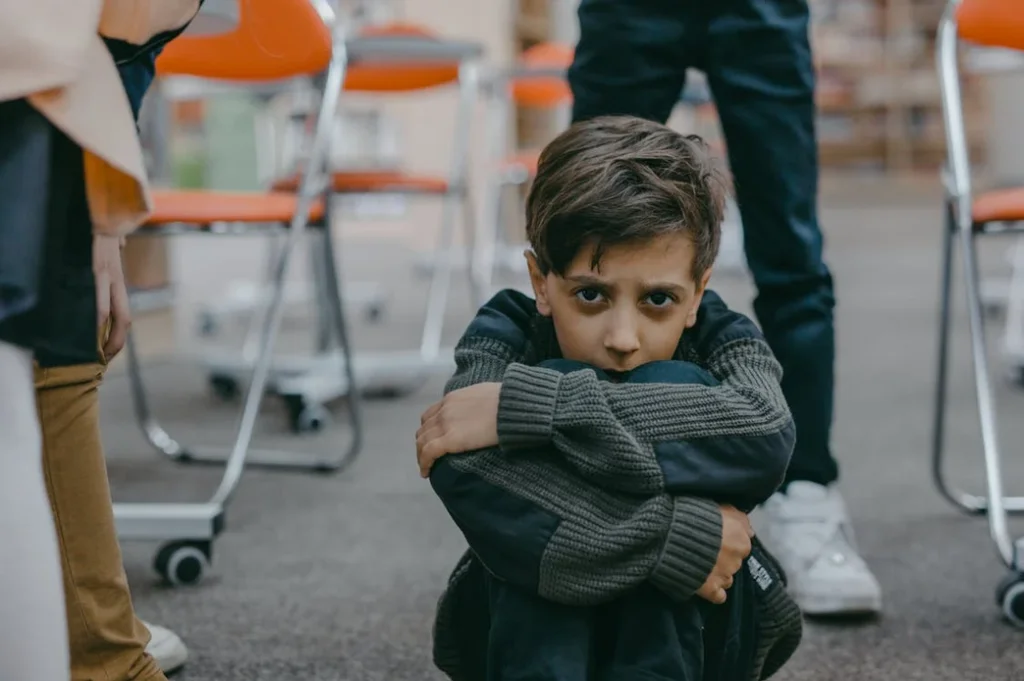Remember the days when kids roamed the neighborhood until the streetlights came on, and parents weren’t glued to their phones checking their whereabouts every ten minutes? Those were simpler times, weren’t they? The parenting approaches many of us grew up with would raise more than a few eyebrows today, as social norms, safety awareness, and our understanding of child development have evolved dramatically over the decades. Let’s take a nostalgic (and sometimes cringe-worthy) look back at the common parenting practices that were once considered perfectly normal but would likely cause quite the stir in today’s world.
1. “Go play outside and don’t come back until dinner”

Children were routinely shooed outdoors after breakfast with the simple instruction to return when the streetlights came on or when they heard Mom calling for dinner. Parents had little to no idea where their children were for hours at a time, assuming they were somewhere in the general neighborhood vicinity. This freedom allowed kids to explore, solve problems independently, and navigate social situations without adult intervention—skills many child development experts now worry are underdeveloped in today’s closely supervised youth. NAEYC does argue that outdoor play time, when safe to do, is essential for development.
Today, parents who allow their children this level of unsupervised freedom might face accusations of neglect or even visits from child protective services. The modern parenting landscape is dominated by concerns about predators, traffic dangers, and the now-common expectation that responsible parents maintain near-constant awareness of their child’s whereabouts. The cultural shift from “be home by dark” to “text me when you arrive” reflects not just helicopter parenting trends but genuine societal changes in how we view childhood safety and parental responsibility.
2. “Spare the rod, spoil the child”

Physical discipline was not only common but was considered necessary for proper child-rearing, with spanking, slapping, and other forms of corporal punishment endorsed by parenting experts, schools, and religious institutions alike. Children might receive physical discipline for infractions ranging from talking back to poor academic performance, often with implements like belts, wooden spoons, or the proverbial switch that children were sometimes sent to select themselves. The psychological impact of this approach was rarely considered, as the focus remained on immediate behavior correction rather than long-term emotional development. Human Rights Watch closely tracks the presence of corporal punishment and litigation forbidding it.
Modern research has consistently linked corporal punishment to increased aggression, antisocial behavior, and poorer mental health outcomes in children. Today, physical discipline is prohibited in schools across the country, and in some areas, parental spanking is legally classified as assault, reflecting a dramatic shift in our understanding of effective discipline. Many parents now employ time-outs, privilege removal, and positive reinforcement techniques that focus on teaching rather than punishing—approaches that would have been dismissed as overly permissive by previous generations.
3. “Children should be seen and not heard”

Children were expected to remain quiet in adult company, speak only when spoken to, and generally make themselves invisible during grown-up conversations or activities. This rule extended to mealtimes in many households, where children were expected to eat silently unless directly addressed by an adult, teaching deference to authority but stifling natural curiosity and self-expression. Family hierarchies were strictly enforced, with children’s opinions considered irrelevant to household decisions, even those directly affecting their lives. Langeek explores the historical context behind this phrase’s prevalence.
The modern approach to parenting typically encourages children to express themselves, ask questions, and participate actively in family discussions. Today’s parenting experts advocate for developing children’s communication skills and critical thinking by engaging them in age-appropriate conversations and valuing their perspectives. The shift from authoritarian to more democratic family structures represents one of the most fundamental changes in Western parenting philosophy, prioritizing relationship-building over rigid power structures that once dominated family dynamics.
4. “Leave the baby outside to nap”

Parents routinely left babies sleeping in carriages outside stores, restaurants, or at home in the yard, believing that fresh air was essential for infant health and development. This practice was so common that department stores often had designated areas outside for baby carriages, while mothers shopped or socialized inside without concern. Babies were expected to adapt to regular household noise during sleep, with no special accommodations made to ensure quiet or consistent nap environments.
Today, leaving a child unattended outside would likely result in concerned citizens calling the police or, at minimum, harsh public judgment about parental negligence. Modern parents are advised to maintain strict sleep schedules in controlled environments, with noise machines, blackout curtains, and careful monitoring of infant sleep patterns through baby monitors or sleep tracking devices. The contrast highlights not only our heightened safety concerns but also the intensification of parenting as a carefully managed scientific endeavor rather than a natural process that tolerates environmental variation.
5. “Babies need to cry it out”

Parents were advised not to respond immediately to crying infants to avoid “spoiling” them, with experts claiming that picking up babies whenever they cried would create demanding, manipulative children. Rigid feeding schedules were strictly enforced regardless of infant hunger cues, and babies were expected to adapt to household routines rather than having routines built around their needs. New mothers were often instructed to limit physical affection and avoid “coddling” their infants, advice that directly contradicted their natural instincts but was presented as scientifically sound.
Contemporary child development research emphasizes responsive caregiving and attachment as crucial for healthy emotional development and secure attachment formation. Today’s parents are more likely to practice demand feeding, baby-wearing, and prompt response to crying—approaches that previous generations might have viewed as indulgent or even harmful. The evolution in our understanding of infant needs reflects broader scientific advances in developmental psychology and neuroscience that simply weren’t available to previous generations of parents who relied on conventional wisdom.
6. “Children should finish everything on their plate”

Children were required to eat everything served to them regardless of hunger levels, preferences, or satiety signals, with the clean plate rule enforced through guilt about starving children elsewhere or punishments for “wasting food.” Foods were often categorized as rewards (desserts) or punishments (vegetables), creating problematic relationships with eating that many adults still struggle with today. Mealtimes frequently became power struggles, with children sometimes forced to sit at the table for hours until they finished unwanted food items.
Current nutritional guidance emphasizes teaching children to recognize and honor their body’s hunger and fullness cues rather than eating to please others or according to external rules. Today’s parents are advised to expose children to varied foods without pressure, separate eating from emotional manipulation, and avoid using food as reward or punishment. This shift represents our evolving understanding of how childhood eating patterns contribute to lifelong relationships with food and the development of healthy self-regulation.
7. “Just rub some dirt on it and keep playing”

Minor injuries were typically dismissed with minimal attention, with children expected to handle pain stoically and return quickly to activities without fuss or special treatment. Parents often handled medical situations at home that would warrant professional attention today, from setting minor fractures to treating serious cuts with household remedies rather than seeking stitches. The approach was partly practical in an era before widespread health insurance but also reflected cultural values that prized toughness and resilience over precaution.
In contrast, today’s parents typically document vaccination records meticulously, research pediatricians extensively, and seek medical advice for conditions previous generations would have handled at home. Modern parents are more likely to err on the side of caution with potential injuries, reflecting both increased access to medical care and heightened awareness of potential complications. While some critics argue we’ve become overprotective, this shift also represents advances in preventive healthcare and recognition that early intervention often leads to better long-term outcomes.
8. “Smoking around kids is perfectly fine”

Parents routinely smoked cigarettes in enclosed spaces with children present, including in cars with windows up and during pregnancy, unaware of the serious health risks this posed. Smoking was so normalized that cigarette advertisements sometimes featured family scenarios, and children frequently purchased cigarettes for their parents from local stores without raising eyebrows. The lack of understanding about secondhand smoke meant children’s developing lungs were consistently exposed to toxins in the name of adult convenience.
Today, smoking around children is widely considered a form of negligence, with smoking banned in vehicles containing minors in many states and social stigma attached to exposing children to any tobacco smoke. Modern parents are typically educated about the dangers of thirdhand smoke residue on clothing and furniture and take precautions to shield children from any exposure. This transformation represents one of the clearest examples of how scientific evidence has dramatically altered acceptable parenting practices within a single generation.
9. “Pregnant women should have a cocktail to relax”

Expectant mothers were often advised that moderate alcohol consumption was perfectly safe, with some doctors even recommending occasional drinks to “calm the nerves” during pregnancy. Women smoked throughout pregnancy without medical objection, and prescription medications were routinely continued regardless of potential fetal effects. Pregnancy was treated as a normal condition requiring minimal lifestyle modification, with concerns about potential harm to the developing baby dismissed as old wives’ tales.
Current medical guidance prohibits any alcohol consumption during pregnancy, with universal warning labels on alcoholic beverages and widespread public health campaigns about fetal alcohol spectrum disorders. Today’s pregnant women typically research every medication, food, and environmental exposure, often giving up substances like caffeine that previous generations consumed without a second thought. This shift reflects our improved understanding of fetal development and recognition that even seemingly minor exposures can have significant developmental consequences.
10. “Children should work from a young age”

Children routinely performed potentially dangerous chores and work, from operating farm equipment to handling household chemicals, with the belief that early responsibility built character and practical skills. Many children held formal jobs starting around age 10-12, working in factories, mines, or delivery positions that exposed them to significant physical risks and limited their educational opportunities. Child labor was viewed not as exploitation but as an economic necessity and valuable character-building experience.
Current child labor laws strictly regulate the types of work minors can perform and the hours they can work, with the prevailing belief that childhood should be protected for education, development, and play. Modern parents typically focus on age-appropriate household contributions that teach responsibility without endangering safety or interfering with academic progress. While many lament the loss of work ethic this shift supposedly represents, it also reflects our collective decision to prioritize childhood development over economic contribution for society’s youngest members.
11. “Don’t discuss feelings or problems outside the family”

Family difficulties, including serious issues like alcoholism, domestic violence, or mental illness, were kept strictly private under the guise of loyalty and privacy. Children were expected to maintain family secrets even when they were personally harmed by them, with phrases like “what happens in this house stays in this house” enforcing silence. Emotional expression, particularly for boys, was discouraged as weakness, creating generations who struggled to identify and communicate their feelings.
The contemporary approach encourages appropriate transparency, emotional intelligence development, and seeking help when needed rather than maintaining harmful secrets. Today’s parents are more likely to discuss feelings openly, teach children the language of emotions, and model healthy emotional processing rather than stoic suppression. This evolution reflects our improved understanding of psychological health and recognition that emotional awareness rather than emotional control ultimately produces more resilient, well-adjusted individuals.
12. “Children don’t need constant praise or affirmation”

Praise was reserved for exceptional achievements rather than effort, with many parents believing that frequent positive reinforcement would produce entitled, soft children unable to handle criticism. Declarations of love or affection were often considered unnecessary or even harmful, particularly for boys who were expected to develop emotional toughness through restrained parental warmth. Many parents operated on the assumption that children inherently knew they were loved without explicit statements, focusing instead on provision and discipline as expressions of care.
Modern parenting emphasizes positive reinforcement, growth mindset development through praising effort rather than outcomes, and regular verbal affirmation of both love and specific positive qualities. Today’s parents are advised to provide the emotional support and validation many of them found lacking in their own childhoods, balancing honest feedback with consistent affirmation of a child’s inherent worth. Though sometimes criticized as creating “participation trophy” entitlement, this approach is grounded in research showing that emotional security forms the foundation for resilience rather than undermining it.
For better or worse, parenting has undergone a remarkable transformation within just a few generations. While today’s hypervigilant, research-driven approach has undoubtedly improved children’s physical safety and emotional well-being in many ways, something nostalgic still lingers about the freedom and resilience fostered by previous eras. Perhaps the ideal lies somewhere in the middle—combining the best safety knowledge and emotional intelligence of modern parenting with the independence and self-reliance that came from less supervised childhoods. Whatever your view, one thing remains certain: parenting continues to evolve, and today’s normal will likely seem just as outdated to future generations as these practices now seem to us.


